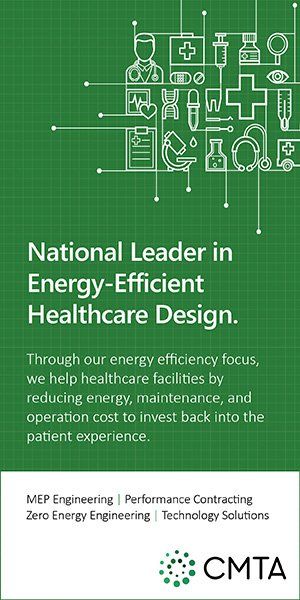Interview
Keeping the Patient at the Center of Health Care
Chris Rubesch, RN, BSN, PHN, President of the Minnesota Nurses Association
What can you share about the recent organizational restructuring at the MNA?
Just like in the nursing process, MNA’s elected nurse leaders are continually assessing our strategic goals and developing plans to help us reach those goals. Through that process we work to ensure we have the right infrastructure, including staff, in place to support our member-led work.
What are some of the MNA legislative agendas?
Our two primary focuses continue to be addressing the corporate structure of our health care system and fixing the staffing crisis that most health care roles are facing. This legislative session some of the legislation we are supporting to achieve those goals includes bringing more transparency to charitable giving and charity care work done by tax exempt health care systems, reforming the medical debt system in our state to ensure that no patient or family goes bankrupt as a result of medical emergency, giving the community more of a voice when health care systems propose closing facilities and putting job protections in place for health care workers who speak up and raise concerns when low staffing levels make patient assignments unsafe.
What can be done to address the current problems surrounding hospital discharges?
Safe discharge planning is one of the most pressing issues in our health care system. Many hospitals across the region have patients waiting to move to rehab facilities, assisted living or skilled nursing facilities but lack available beds or transportation. We need to invest in expanding the availability of these critical services so that patients can get the right care in the right location. Additionally, we have a substantial backlog of patients who need outpatient services like ongoing lab testing or therapy. Investing in these services can keep patients in their community or home where they want to be and can actually result in lower health care costs by avoiding expensive hospital admissions.
Recently there has been unprecedented action involving physicians joining unions in Minnesota.
What advice can you share with physicians around this?
I think the recent activities of physicians and advanced practitioners joining unions is a direct result of the frustrations of working within our health care system. Insurance companies are increasingly making the rules and overruling professional practice decisions. In some cases, hedge funds and investment banks are taking over provider groups and attempting to maximize profits. Health system executives are closing units and facilities, taking providers out of the communities they work in and putting patient care at risk. This is not why any health care worker chooses our profession. My advice to physicians who are frustrated is to talk with your co-workers. Whether or not unionizing is the end result, having conversations with your co-workers is the first step to identifying a problem and working for change — in your workplace and in our health care system more broadly.
Insurance companies are increasingly making the rules and overruling professional practice decisions.
What can you tell us about the Nurse Licensure Compact?
The Interstate Nurse Licensure Compact is an agreement among states to recognize the nursing licenses of registered nurses in any other compact state and allow them to practice in all other participating states. On the surface the compact is sold as a way to ease the nurse staffing crisis, but in reality it’s a shell game shuffling the existing pool of nurses between states who are increasingly competing for the same people. It also reduces the autonomy of the Minnesota Board of Nursing to regulate nursing licenses in the state. The compact also creates problems for nurses coming from one state to practice in another who are expected to know local regulations and their scope of practice. A nurse coming from another state with vastly different regulations on women’s health care, for example, might not know what the law is in Minnesota, but they are nevertheless expected to practice to our state regulations. While all states are competing for health care staff, Minnesota has more registered nurses than many other states and has existing license reciprocity for nurses in neighboring states.
Workplace violence has become a topic of increasing concern for nurses. Please tell us about these issues.
Workplace violence is sadly becoming a part of work in so many fields, and health care is no exception. In health care we are treating people who are often experiencing some of the worst days of their lives. They often bring that stress and emotion with them to the clinic, ER or hospital. Patients and their families can also have complicated family and social situations that the health care team has to navigate. Add to this recipe low staffing that means health care professionals are able to spend less and less time with each patient, listening and establishing a relationship, and you have situations primed for misunderstanding, anger and violence. At the heart of so many of these situations is the need to spend time with and give individual attention to each and every patient. We can’t allow patient care to become another metric measured with “productivity values” and billable hours.
Workforce shortage issues are endemic throughout health care. How is the MNA responding to these problems as they apply to nursing?
We continue to advocate for legislation and policy that puts the patient at the center of health care. This means advocating for more equitable and accessible training programs to bring people into health care professions. Loan forgiveness programs that can make health care professions more attainable for all Minnesotans: Supporting changes to our health care system that prioritize preventative medical care rather than relying on critical late interventions; advocating for a system that ensures all people have health insurance and access to quality, equitable care; improving staff levels and working conditions so health care jobs are sustainable for those who want to do them. And of course supporting our fellow health care team members that we depend on — CNAs, respiratory therapists, physical therapists, occupational therapists, laboratory staff, physicians and more.
What are some of the positive and negative elements the increasing use of artificial intelligence in health care brings to nursing?
As with so many professions, AI holds many promising possibilities as well as potential pitfalls. The potential for more efficient care or faster charting in hospital care settings is promising. But the potential for this technology to add to systemic disparities in our health care system is extremely concerning. As an example, computer programs designed to diagnose early skin cancers have a high failure rate among patients with darker skin tones because the data sets used to program them were skewed toward patients with lighter skin tones. We must be cautious as new technology is introduced so that we don’t allow human biases and faults to be built in. Additionally, nurses and physicians alike know that we must rely on our human assessments and knowledge to know when to intervene and cannot always rely on a computer to correctly identify an EKG rhythm or diagnose a disease. Ultimately, like any medical equipment, AI may be a useful tool, but only in the hands and judgment of a trained medical professional, not as a replacement for the expertise and hands-on care of health care staff.
Please discuss some of the ways that communication could be improved between nurses and physicians.
Communication is always a challenge in a fast paced and high stress environment like health care. One of the concerning trends I have seen recently is relying on mobile-type communication devices between team members in hospital settings. Personal cellular-type devices have long been discouraged — and sometimes banned all together in hospitals — for good reasons. They can add interruptions and distractions during patient care, are a vector for disease transmission, and can flood physicians and nurses with far too many messages to reasonably read and respond to. I think we need a better way to ensure that communications between nurses and physicians are timely but not leading to distractions or potential errors. Establishing better protocols on where these devices can and should be used and in what circumstances would be a good start.
What does community-based nursing mean?
Community-based nursing is individual-centered, family-centered and community-centered health care. It brings nursing care to the patient, family or group wherever they are. This could be in a home, workplace, school, church or beyond. Some people are already familiar with community-based nursing programs like school nurses, parish nurses, county health departments or programs like Early Childhood and Family Education or Success by 5. Community nursing is an important part of the health care spectrum, and we need to invest in this type of care as a way to promote prevention and early intervention of diseases. Investing in this type of care can lead to many positive health outcomes and an overall cost savings by keeping patients out of emergency rooms and hospitals.
Chris Rubesch, RN, BSN, PHN, is the president of the Minnesota Nurses Association.
MORE STORIES IN THIS ISSUE
cover story one
Hospital at Home: Inside a growing trend
By David W. Plocher, MD
cover story two
Community First Services and Supports: A New Model for Personal Care Support
















